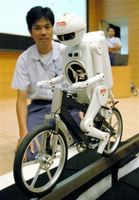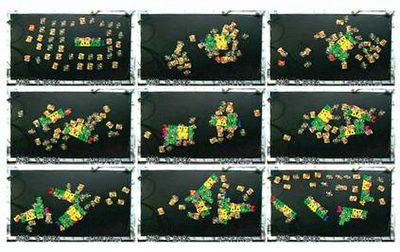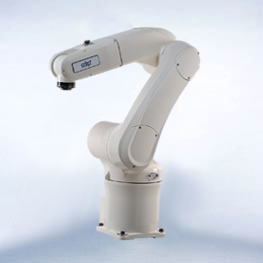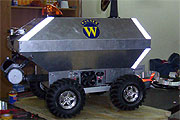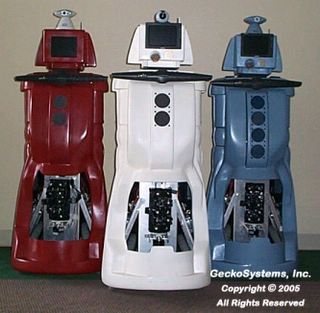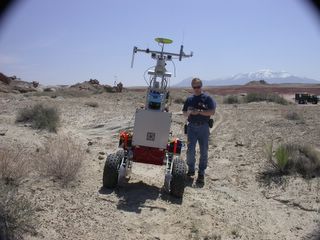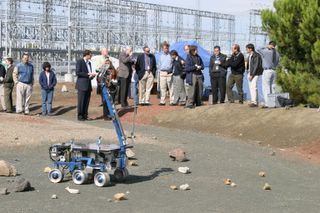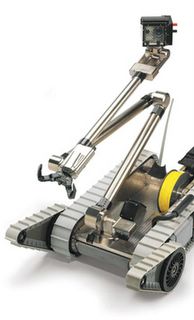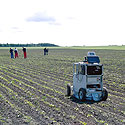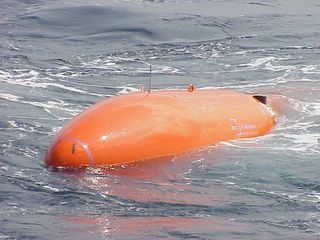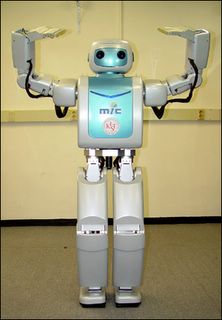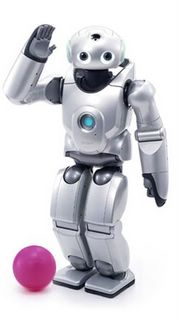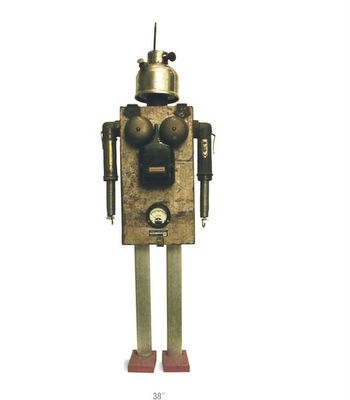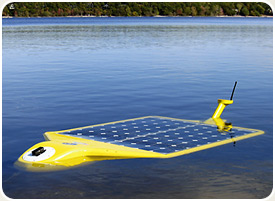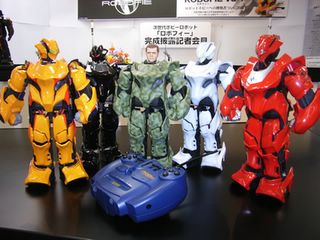From Fujitsu press release...Fujitsu Begins Limited Sales of Service Robot "enon" For Task Support in Offices and Commercial Establishments
Advanced practical-use service robot features multi-functionality and enhanced safety
Tokyo, September 13, 2005 — Fujitsu Frontech Limited and Fujitsu Laboratories Ltd. today announced that Fujitsu Frontech will begin limited sales of their new service robot, enon(TM), on a limited basis in Japan from September 13, 2005. Jointly developed by the two companies, enon is an advanced practical-use service robot that can assist in such tasks as providing guidance, escorting guests, transporting objects, and security patrolling.
enon is an acronym of the phrase "exciting nova on network." The phrase conveys the robot's ability to autonomously support customers' tasks while being linked to a network.

As a fully developed practical-use service robot, enon features enhancements such as lighter weight, smaller size, and more safety features...
enon is an advanced service robot capable of accomplishing multiple tasks such as providing guidance, escorting people, transporting objects, and security patrolling, thereby differentiating enon from other service robots on the market that are designed specifically for only a single task such as transporting, cleaning, or surveillance.
Product features:
1. Autonomous navigation enabling easy operation
2. Transport of objects
3. Handling of objects
4. Feature-rich communication functions
Speech recognition and speech synthesis in Japanese are included as standard features. enon's touch panel LCD monitor on its chest enables the robot to communicate in a diverse range of situations.
5. Linkable to networks
6. Swivel-head feature enables facing reverse directions
7. Wide variety of expressions
Light emitting diodes (LEDs) on the eye and mouth area of its face enable enon to have a wide range of facial expressions. Enon also has LEDs on the back of its head, making it possible for the robot to display its operational state to the rear as well.
8. Safety
see specifications at this link...
Fujitsu Begins Limited Sales of Service Robot "enon" For Task Support in Offices and Commercial Establishments : FUJITSU


